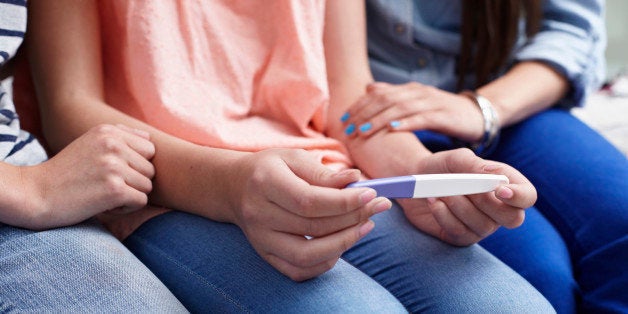
Though teen birth rates have dropped in the past several decades, more than 750,000 girls between the ages of 15 and 19 still get pregnant in the United States each year. But what would happen if young women were simply given free birth control and educated about the best contraceptive options available to them?
Researchers with the Washington University School of Medicine in St. Louis set out to tackle that question, and the answer, they found is clear: When teenagers have access to free, long-acting contraception, pregnancies, births and abortions plunge well below current national averages.
The study, published in The New England Journal of Medicine on Wednesday, took place over a five-year period and included more than 1,400 girls, ages 15 to 19, from the St. Louis area. Researchers provided the teens with basic contraceptive counseling, presenting the most effective options first -- namely, long-acting reversible methods like intrauterine devices and implants.
After counseling, 72 percent of the participants in the so-called Contraceptive CHOICE Project chose long-acting reversible methods, while the remaining 28 percent went with other forms, including the birth control pill. The project provided all the teens with their choice of contraception for free.
The researchers then followed up with the teenagers to see whether the education and access to birth control had any effect. What they found was striking: Between 2008 and 2013, the average annual rate of pregnancy among teens enrolled in the study was 34 per 1,000 -- compared to 158.5 per 1,000 among sexually active teens in the United States in 2008.
Similarly, abortion rates were significantly lower among teens in the study -- just 9.7 per 1,000, compared to 41.5 per 1,000 among sexually active teen girls nationwide.
The significant racial disparities in national teen pregnancy rates, which are higher in black and Hispanic communities, also shrank in the study population, the researchers found.
"Nationally, there's a huge disparity, like a lot of health conditions," Gina Secura, director of the project, told The Huffington Post. "But in the CHOICE cohort, they were almost nearly identical. So it can be done. We can reduce the disparity in unintended pregnancy in our teens in the United States."
Yet while nearly three-quarters of the teens in the study opted for long-acting reversible methods, less than 5 percent of teens in the United States who currently use contraception rely on such methods.
Reproductive health experts are trying to get that number much higher. The American College of Obstetricians and Gynecologists has singled out the IUD and the birth control implant as the most effective forms of reversible birth control available, noting that they are 20 times more effective than birth control pills, the patch or the ring. And this week, the American Academy of Pediatrics recommended IUDs and hormonal implants as doctors' first choice of contraception for teens.
The high upfront costs attached to long-acting methods are often cited as a major barrier for teenagers. Such methods can run up to $1,000, according to Planned Parenthood, though under the Affordable Care Act, most insurance plans must cover FDA-improved contraceptive methods -- including long-acting reversible contraception -- for women.
However, Secura said she and her colleagues were startled to find that even when they eliminated the issue of cost, lack of knowledge was still a significant roadblock for the teens in the study.
"When the first woman came to enroll and we asked her what she wanted, she said, 'I don't know what I want. What are the options?' This light bulb went off, [like], 'Oh my goodness, we have a job to do,'" Secura said. "The first thing we did is say, 'Let's completely turn education upside down. Rather than starting by talking about the pill, let's start with the most effective method, then go down the list.'"
The researchers eliminated other common impediments, ensuring that long-acting methods were stocked and that, barring specific medical complications, the teens could have their IUD or implant inserted on the same day they said it was their first choice -- something that's not always the case in the real world.
Secura acknowledged that the "ideal" conditions created for the study -- being able to provide birth control and education to teens at no cost -- is far from the reality on the ground in many reproductive health clinics and doctors' offices.
"We've received lots of calls from clinics and organizations saying, 'Help us figure out how to translate these findings,'" Secura said. "If it was easy, it would've already been done."

